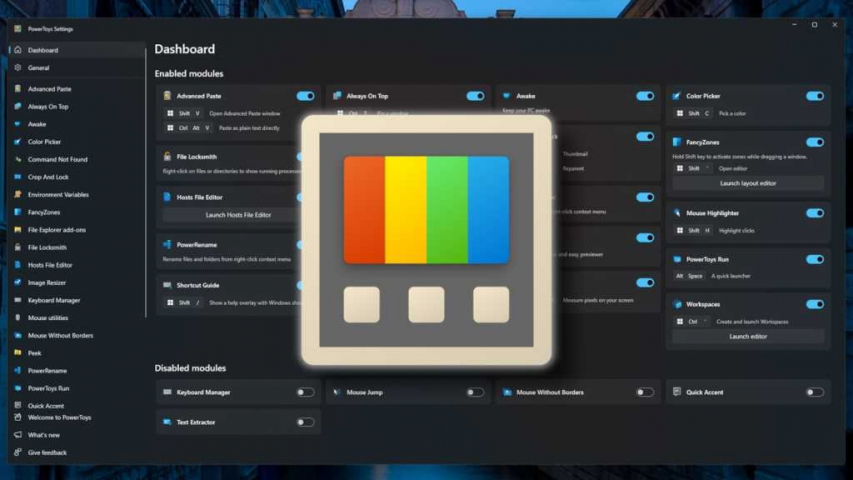In this blog post, you’ll learn the details of SAP Readiness Check for SAP BW/4HANA and understand the ST-A/PI requirement. Then, you’ll learn about the prerequisites and the process to execute the readiness check. You’ll explore the functions available and finally learn how to view the SAP Readiness Check for SAP BW/4HANA. SAP Readiness Check for SAP BW/4HANA serves as a valuable support system for customers undertaking the transition from existing SAP BW 7.x systems to the advanced SAP BW/4HANA platform. This comprehensive tool meticulously examines both the production systems, or their replicas, and the development systems. Its primary objective is to gauge the compatibility of these systems with the SAP BW/4HANA conversion process, scrutinizing the intricacies involved in the conversion and identifying essential preparation steps. The results of this analysis are not only detailed but also intelligently consolidated into an interactive dashboard. This dashboard serves as a central hub for internal communication within an organization or for communication with SAP, providing stakeholders with a clear and concise understanding of the system’s readiness for SAP BW/4HANA conversion. Moreover, SAP Readiness Check for SAP BW/4HANA goes beyond being a mere diagnostic tool by offering a comprehensive pre-conversion overview. This overview proves instrumental in recognizing and addressing current system landscape preparation steps well in advance of the official commencement of the SAP BW/4HANA system conversion project. By providing this foresight, the tool empowers organizations to proactively plan and execute necessary steps, ensuring a smoother and more efficient transition to the enhanced capabilities of SAP BW/4HANA. SAP Readiness Check for SAP BW/4HANA assesses specific areas, including the following: In essence, SAP Readiness Check for SAP BW/4HANA methodically examines and reports on these diverse facets, offering a comprehensive understanding of the system’s readiness for the SAP BW/4HANA conversion, facilitating informed decision-making and proactive measures. The first step is to make sure the ST-A/PI add-on is the latest. The ST-PI and ST-A/PI tools, along with Transaction SDCCN, collect essential data for service sessions and SAP EarlyWatch Alert reports. Additionally, the AP/I tools feature analysis tools such as Transaction ST14 and Transaction ST12 for comprehensive analysis. Transaction ST13 provides specialized tools for evaluating SAP BW system performance. In Transaction SE38, choose Report RTCCTOOL > Execute. The results are shown in this figure. You can also see the version from Transaction RSA1 by choosing System > Status > Choose System Data. The data is shown below. Obtain the latest ST-PI and ST-A/PI versions from SAP Service Marketplace. Transfer downloaded files to your server, and extract them using the SAPCAR tool at the SID admin level. Access Transaction SAINT to load the package, and install ST-AP. Then, update ST-PI via Transaction SPAM for system stability, security, and compatibility with the latest SAP technologies, ensuring optimal performance for your SAP environment. The first step for the readiness check is to refer to SAP Note 3061594 - “SAP Readiness Check for SAP BW/4HANA - Central Note.” This SAP Note introduces the essential data collection framework managed by the RC_BW_COLLECT_ANALYSIS_DATA report. Efficient scheduling of the batch collection job hinges on the Activity 16 authorization assigned to the user ID, specifically for object S_DEVELOP. This authorization ensures seamless execution of the collection job, fostering a streamlined data analysis process within the SAP environment. SAP Readiness Check for SAP BW/4HANA accommodates various eligible releases for conversion: Make sure you check the latest version of SAP Note 2575059 - “SAP BW Note Analyzer Files for SAP Readiness Check for SAP BW/4HANA and SAP Data Datasphere, SAP BW Bridge,” and download the XML file from the attachment in this note, as shown here. Once you’ve downloaded the ZIP file, you can now execute the Note Analyzer report Z_ SAP_BW_NOTE_ANALYZER. With the downloaded XML file, when you execute the report as shown in the next figure, you have the following choices: Run the report, bearing in mind that the process will require some time to validate the SAP Note. During this time, the system will verify the existence of the note and proceed to download it if it’s accessible. Upon completion, you’ll observe the note status displayed as green if it’s available or red if it isn’t accessible. You can see the result of the check in the next figure. Install the notes one by one in the same order. After the notes are implemented, repeat the XML checks multiple times until all the note statuses are green. You can see that the XML with code scan was available. You can now upload the XML and install the required SAP Notes. For SAP BW versions 7.30 and above, the readiness check includes a code scan. If your SAP BW version is below 7.3, you must independently execute the code scan report. We’ll now concentrate on SAP BW versions greater than 7.3. The following sections outline the process. Once the steps in the previous section have been completed, you need to execute the SAP Readiness Check for SAP BW/4HANA in the production SAP BW system. The first step is data collection. Execute Transaction SE38 and run RC_BW_COLLECT_ANALYSIS_DATA in the productive client of the system scheduled for analysis, as shown below. Click on Schedule Analysis to see the screen shown. Click the checkmark button in the first figure to see the jobs status as shown in the second figure. Once you’ve seen the list of active jobs, you can monitor when all the jobs are finished. If all the jobs are completed, go back to the readiness check report selections, as shown earlier, and click the Download Analysis Data option. You’ll get a popup to save the file. After the file has been downloaded, you can see the details. Once you’ve downloaded the ZIP file, the next step is to use this file and understand the details that will help to check for SAP BW/4HANA readiness. SAP Readiness Check for SAP BW/4HANA in this version offers valuable insights via the following tiles: The primary feature of this tile lies in providing a comprehensive overview of the compatibility status of active SAP BW objects in the system earmarked for conversion. Specifically, it focuses on listing objects that are currently incompatible with SAP BW/4HANA. There is a toggle button integrated into the tile that allows users to seamlessly switch between in-place and remote/shell conversion options, with a note on the potential impact on findings. Compatibility statuses are categorized into three main types: Findings are logically grouped based on when they should be addressed in the conversion process, providing a structured approach. References to SAP Notes (mostly simplification items) are given whenever applicable to offer additional guidance in addressing compatibility issues. This tile furnishes an overview of the compatibility status of source systems linked to the system slated for conversion. It exclusively lists systems that are currently incompatible with SAP BW/4HANA. Key features include the following: References to SAP Notes (primarily simplification items) are provided whenever applicable, serving as valuable resources for further guidance and resolution. As a result of modifications made to SAP BW objects and the streamlining of various ABAP function modules, classes, reports, exits, interfaces, variables, and other elements in SAP BW/4HANA, it’s essential for customers to gain insight into the necessary adaptations for their custom code developments. This overview is crucial for ensuring compatibility between their system and solutions with SAP BW/4HANA. A comprehensive understanding of the specific implications on the analyzed system plays a pivotal role in the success of a conversion project. The Custom Code Compatibility tile delivers a comprehensive assessment of custom code in the analyzed system, addressing potential incompatibility with SAP BW/4HANA. Given the varied use of custom code, which may depend on deprecated ABAP entities or SAP BW objects, this information is pivotal. The tile covers diverse custom code locations in all possible areas of SAP BW mentioned earlier. This tile presents a comprehensive overview of the compatibility status of implemented add-ons within the SAP BW system scheduled for conversion. Notably, users have the flexibility to include comments for individual findings, offering utility for third-party add-ons. It’s essential to recognize that the analysis relies on maintenance planner, underscoring the importance of ensuring that the system’s data is current within this tool for accurate and reliable compatibility assessments. This tile summarizes current database size and distribution, recommends target system size (e.g., memory, nodes, SAPS), and lists the largest SAP BW objects and tables based in the system on their Estimated Size on SAP HANA. This information is crucial for strategic planning and optimizing system performance. The analysis relies on the SAP HANA BW Sizing report (/SDF/HANA_BW_SIZING). You can launch SAP Readiness Check in public mode from SAP for Me via these steps: Now you’ll see its status as Available in this figure. Editor’s note: This post has been adapted from a section of the book Migrating to SAP BW/4HANA by Renjith Kumar Palaniswamy.Readiness Check Basics
Functional Changes
Installed Add-Ons
System Statistics
Technical System Information
System Requirements
Estimation of System Size
System Configuration
Basics of the ST-A/PI Add-On


Prerequisites



Executing SAP Readiness Check for SAP BW/4HANA





Functions Available in the SAP Readiness Check for SAP BW/4HANA
Object Compatibility
Source System Readiness
Custom Code Compatibility
Add-On Compatibility
Database Sizing
Viewing the SAP Readiness Check for SAP BW/4HANA















!['호부지가 돌아왔다!' NC, 이호준 제4대 감독 선임 "특별한 팀서 감독하게 돼 기뻐" [오피셜]](https://thumb.mtstarnews.com/21/2024/10/2024102215175357120_1.jpg/dims/optimize/)








 English (US) ·
English (US) ·